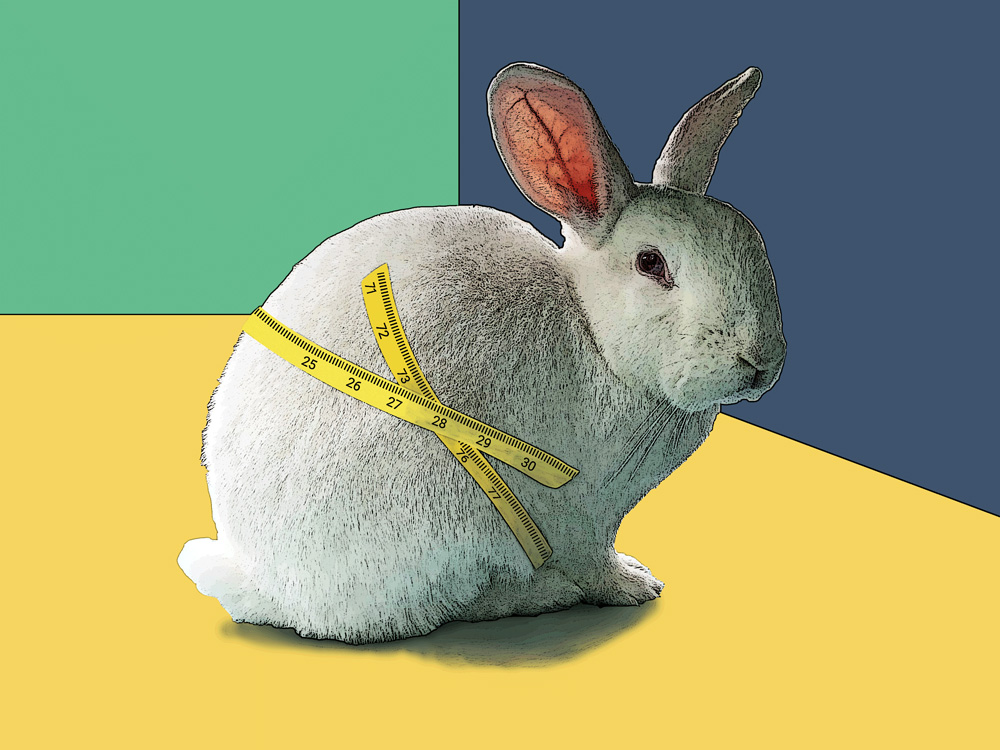
OMG, our rabbits are fat!
That was the report from the vet last summer when we picked up our chunky charges from their RHD2 vaccinations. Like any loving pet owners our immediate reaction was… complete and utter denial. We strive to keep their diet healthy and provide ample opportunities to exercise. How could this be?
Bunny-Buff or Butter-Ball?
We forced ourselves to face up to it. Our veterinarian is the best rabbit doc I’ve ever had. My husband and I both have enormous faith in her expertise. Something would actually have to be done.
We immediately stopped their daily 1/3 cup of shared timothy cereal. The vet’s recommendation was to limit it to a teaspoon each per day. Henceforth they would only get cereal as a training reinforcer or in puzzle toys, never free-fed. I’d been considering that change anyway, ever since reading Behavioural Problems in Rabbits by Dr. Guen Bradbury. In the book, she advises that concentrate food — standard rabbit cereal — should only be fed as treats or for training. This was just the nudge I needed.
Now, six months later, feeling virtuous and content, we sought confirmation of our new regimen’s benefits. As a training exercise, I lured each bun onto an electronic scale. We compared the results to the records from the vet, and sure enough, they both weighed in … heavier?!?
Is it just me, or does everyone’s electronic scale seem like (to coin a phrase) a big fat liar? One day I’ll step on it and then the very next morning, at the same hour, the result has gone up or down by five pounds! If I reset it and immediately retry, I get yet a third number. I don’t trust it. So I’m not entirely convinced they weigh more than they did last summer.
Then I happened upon this infographic very helpfully published by The Pet Food Manufacturer’s Association (PFMA) in London, UK :
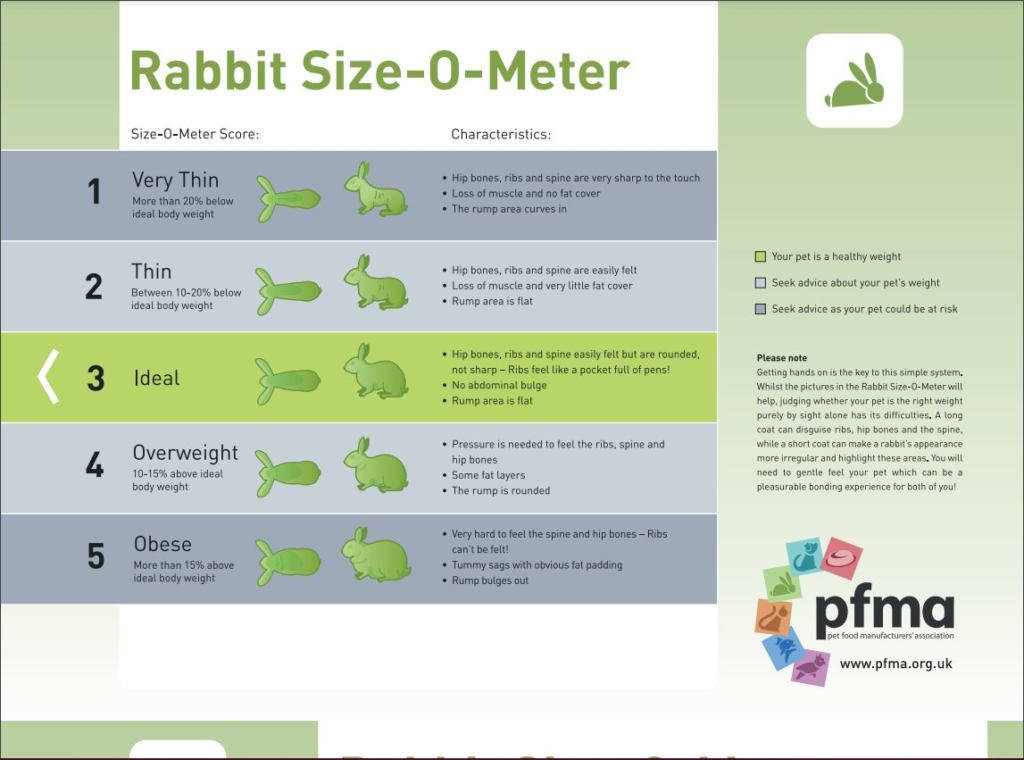
The drawings weren’t that helpful to me. I find the distinction between line 3 and 4 to be pretty subtle. And how often do you actually get a profile view of your bun sitting up? When they’re not on the move or in some twisted lotus position grooming themselves, they’re almost always lying down. And if one does sit up, the moment I crouch down to look for a telltale hanging belly, they’ll immediately sprint towards me — another side effect of my being a pretty reliable <ahem> source of tasty treats.
So, rather than relying on visual inspections, I followed the PFMA’s instructions for assessing my buns by touch, which you can find on the their web site . No doubt about it, they fall into row 4. I can feel ribs, if I squeeze. There is no “pocket of pens” like the one described in line 3 — apparently the rabbit equivalent of washboard abs — to be found.
If you haven’t tried checking your rabbit’s weight, I highly recommend you visit the site yourself and give it a try.
Mea Cute-a Culpa
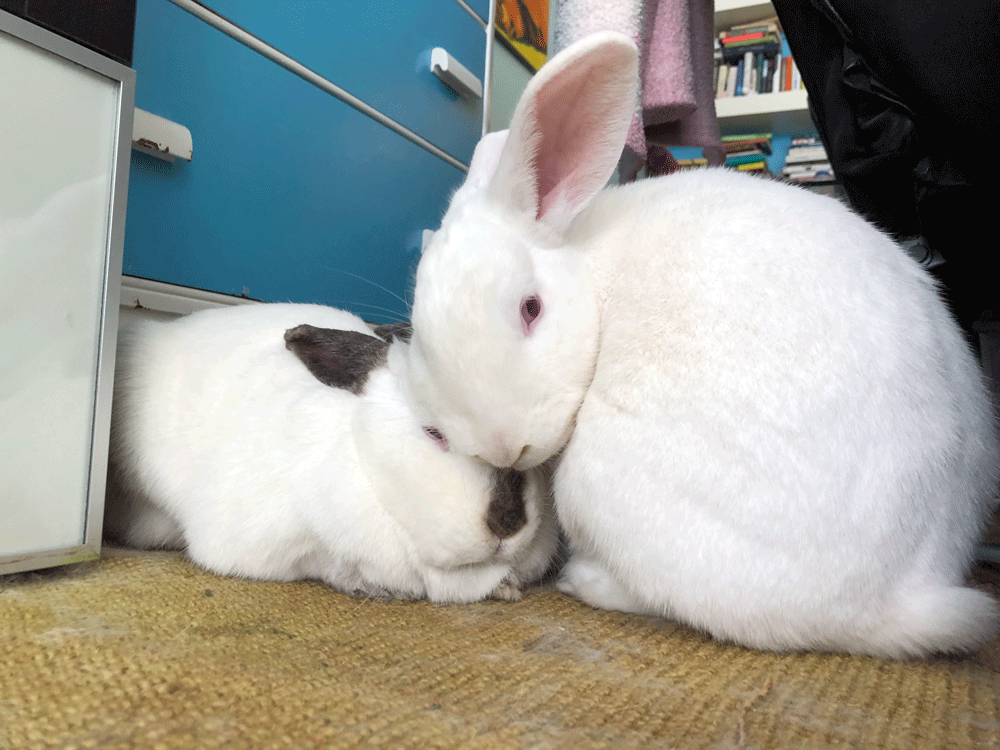
It’s always tough to learn that you haven’t been a perfect parent. To assuage my guilt, I immediately researched pet obesity on the internet. Turns out 54.5% of dogs and 59.5% of cats in the U.S. are overweight or obese, according to The Association for Pet Obesity Prevention’s latest data (from 2018) . I’ve seen enough pudgy dogs walking around town to have pretty high confidence in their numbers. By those standards, I’m hardly an anomaly among pet owners, more the norm.
Naturally you’re now wondering about the obesity rates for rabbits. So am I. Good luck finding that out! Though I checked multiple web sites from organizations that purport to be about “pet” health, like most things “pet” in the U.S., they’re only about cats and dogs. They fail to acknowledge that any other type of domesticated animal might exist. Not that this is a major “pet” peeve of mine or anything.
The U.K. does better in terms of having information about rabbits online. Yet, I was still unable to find any angst-soothing statistics on the rate of obesity.
What’s a Bunny-Mum to do?
Every mother wants to spoil and coddle their kids. All rabbits have an adorable penchant for sweet snacks. That combination is a pretty potent recipe for rotundity. It’s very tempting to just shrug and say, “Well, I think Bugs looks cute and he’s happy. So what if he’s no rabbit fashion model?”
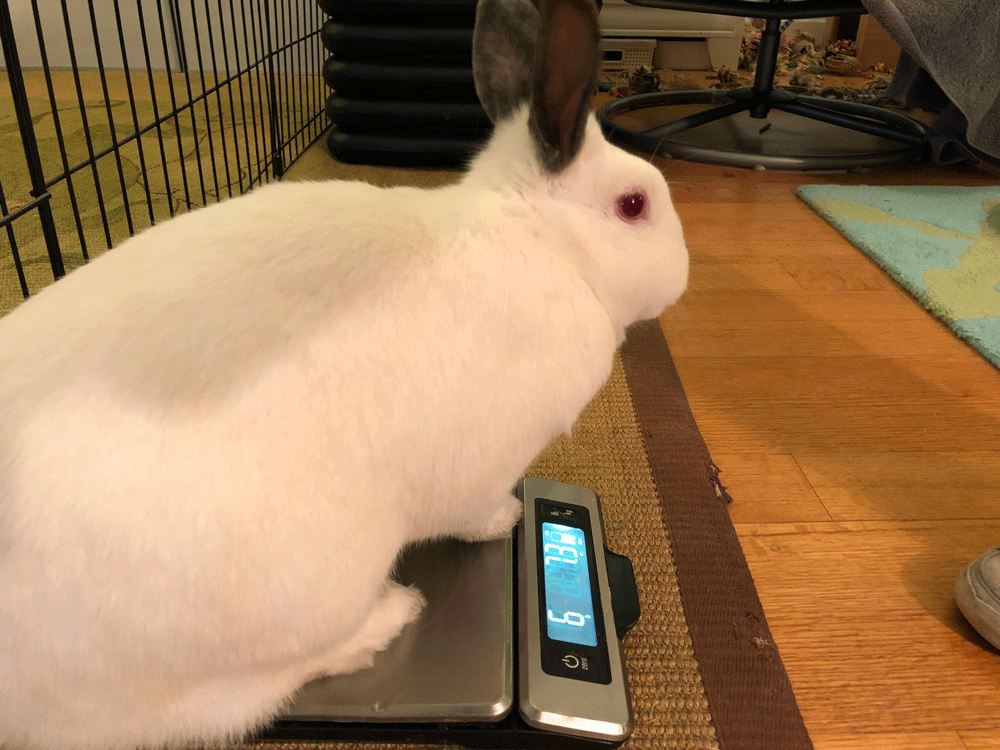
But excess weight in rabbits has serious health consequences. If you need convincing, take a look at this article on bunny obesity from House Rabbit Society. It’s a bit hare-raising (think fatty liver disease, arthritis, heart disease). Those extra pounds will probably translate into fewer years with your wiggle-nosed friend and perhaps some avoidable suffering.
Time for the hippity-hoppity treadmill? If your bun is confined to a small space, you should definitely expand it. Also, make sure there’s lots of fun things to explore and play with. But don’t expect exercise to completely fix the problem.
According to Dr. Bradbury, weight problems are rare for rabbits who are:
- “fed primarily on forage, [see sidebar]
- “kept with companions (so have more simulation, leading to more movement) and
- “have constant access to a suitable exercise area” (Bradbury, p. 61)
Our buns have over 350 square feet of space to play. Their domain includes containing two tunnels, lots of toys, and a cardboard corner gym. If exercise alone could fix this, we wouldn’t be in this mess.
In rabbits, as in cats, dogs, and people, the unpleasant truth is, caloric restriction is the key path to weight loss. To help an overweight bunny, you’ll have to cut way back or eliminate treats for a while. If that doesn’t fix it, I recommend you work with your vet to determine a suitable diet plan.
As for Finnegan and Moraea, their hay supply will be kept fully stocked with timothy, orchard grass, oat, and barley hays. Note: Alfalfa is not on the menu because it’s too rich. They’ll continue to get a few leafy greens, but cereal and treats will be further restricted until those “pen pockets” start to appear.
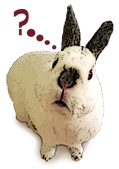 What’s Forage?
What’s Forage?
Dr. Bradbury recommends feeding forage for healthy weight, but what exactly is it?
Polling social media yielded theories ranging from household items and candy to vegetables. Most people’s responses featured hay, which was my best guess as well.
Luckily, I was able to reach Dr. Bradbury for her definition:
Grass, hay, leaves, and branches (off edible trees). It’s high-cellulose, entire plant material that is not cultivated as a monocrop (so diverse hay meadows produce forage hay, but monocrop ryegrass or alfalfa does not). This gives a diversity of plants and increased micronutrient content, making it more rewarding to eat and very unlikely to lead to deficiencies, even if it’s the only source of food.
The Fluffy Tail of This Blog Post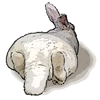
Our furry friends’ waistlines are just as susceptible to unhealthy expansion as ours. It’s pretty quick and simple to examine your bun for weight issues. If you find he’s not where he should be, you’re not alone, but you do need to take action. Consult your vet to implement lifestyle changes that will get him into tip-top shape for a longer and healthier life!
Veronica Reed says:
Applies to horses too!
Melinda says:
I guess rather than a “pocket of pens”, it’s a set of organ pipes!
Syl says:
Those bunnies look perfect to me!